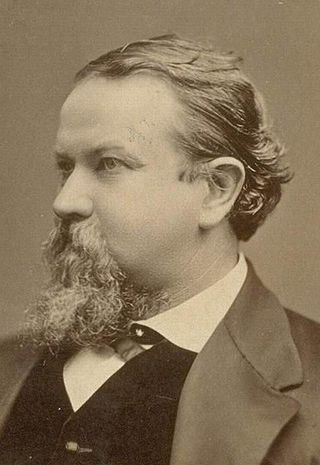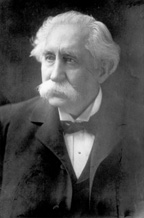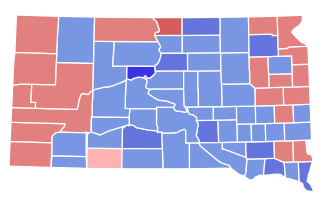
Samuel Jones Tilden was an American politician who served as the 25th governor of New York and was the Democratic nominee in the disputed 1876 United States presidential election.

Thomas Chipman McRae was an American attorney and politician from Arkansas. He served as a Democratic member of the United States House of Representatives and the 26th Governor of Arkansas, from 1921 to 1925.

Milton Slocum Latham was an American politician, who served as the sixth governor of California and as a U.S. Representative and U.S. Senator. Latham holds the distinction of having the shortest governorship in California history, lasting for five days between January 9 and January 14, 1860. A Lecompton Democrat, Latham resigned from office after being elected by the state legislature to a seat in the U.S. Senate.

Alvin Hawkins was an American jurist and politician. He served as the 22nd Governor of Tennessee from 1881 to 1883, one of just three Republicans to hold this position from the end of Reconstruction to the latter half of the 20th century. Hawkins was also a judge on the Tennessee Supreme Court in the late 1860s, and was briefly the U.S. consul to Havana, Cuba, in 1868.

William Brimage Bate was a planter and slaveholder, Confederate officer, and politician in Tennessee. After the Reconstruction era, he served as the 23rd governor of Tennessee from 1883 to 1887. He was elected to the United States Senate from Tennessee, serving from 1887 until his death.

Robert Love Taylor was an American politician, writer, and lecturer. A member of the Democratic Party, he served three terms as the 24th governor of Tennessee, from 1887 to 1891, and again from 1897 to 1899, and subsequently served as a United States senator from 1907 until his death. He also represented Tennessee's 1st district in the United States House of Representatives from 1879 to 1881, the last Democrat to hold the district's seat.

The Michigan Republican Party is the state affiliate of the national Republican Party in Michigan, United States, sometimes referred to as MIGOP.

United States gubernatorial elections were held on November 5, 2002, in 36 states and two territories. The Republicans won eight seats previously held by the Democrats, as well as the seat previously held by Minnesota governor Jesse Ventura, who was elected on the Reform Party ticket but had since renounced his party affiliation. The Democrats won 10 seats previously held by the Republicans, as well as the seat previously held by Maine governor Angus King, an independent. The elections were held concurrently with the other United States elections of 2002.

The 1876 South Carolina gubernatorial election was held on November 7, 1876, to select the governor of the state of South Carolina. The election campaign was a referendum on the Radical Republican-led state government and their Reconstruction policies. Opponents disputed the challenger Wade Hampton III's victory, gained by a margin of little more than 1100 votes statewide. But he took office in April 1877, after President Hayes withdrew federal troops as a result of a national Democratic compromise, and the incumbent Daniel Henry Chamberlain left the state.
The Massachusetts Republican Party (MassGOP) is the Massachusetts branch of the U.S. Republican Party.

The 1882 South Carolina gubernatorial election was held on November 7, 1882 to select the governor of the state of South Carolina. Hugh Smith Thompson was nominated by the Democrats and ran against J. Hendrix McLane, a Greenback-Labor candidate. Thompson easily won the general election and became the 81st governor of South Carolina.
The Democratic Party of Georgia (DPG) is the affiliate of the Democratic Party in the U.S. state of Georgia. It is one of the two major political parties in the state and is chaired by Nikema Williams.

The 2014 Tennessee gubernatorial election took place on November 4, 2014, to elect the governor of Tennessee, alongside other state and local elections. Incumbent Republican governor Bill Haslam was re-elected to a second term with 70.3% of the vote, defeating his Democratic challenger Charles Brown. Improving on his performance from 2010, Haslam also carried every county in the state.

The 1880 Greenback Party National Convention convened in Chicago from June 9 to June 11 to select presidential and vice presidential nominees and write a party platform for the Greenback Party in the United States presidential election 1880. Delegates chose James B. Weaver of Iowa for President and Barzillai J. Chambers of Texas for Vice President.

Alfred Alexander Freeman was an American politician, judge and diplomat, active during the latter half of the 19th century. He served several terms in the Tennessee House of Representatives in the years following the Civil War, and was the Republican nominee for Governor of Tennessee in 1872. He also served as United States Assistant Attorney General for the Post Office Department from 1877 to 1885, territorial judge of New Mexico from 1890 to 1895, and United States Consul to Prague in 1873. He established a lumber company in British Columbia in the early 1900s.

The 1878 Massachusetts gubernatorial election was held on November 5. Former acting Governor Thomas Talbot, a Republican, defeated Benjamin Butler, who ran as an independent Greenback candidate with Democratic support. Butler's supporters secured a majority of delegates to the Democratic state convention, but his nomination was rejected by the state party committee after his supporters used violent tactics to exclude anti-Butler delegates from the convention hall.

The 1880 Maine gubernatorial election was held on September 13, 1880 for a two-year term that was scheduled to run from January 13, 1881 to January 3, 1883. The contest resulted in the victory of Greenback and Democratic nominee Harris M. Plaisted, who narrowly defeated incumbent Republican governor Daniel F. Davis, one of the few times Republicans lost control of the governorship between the founding of the party in the 1850s and the Great Depression. This was the first gubernatorial election in Maine in which a plurality of the popular vote was sufficient to elect the governor, in accordance with a constitutional amendment ratified the same day.

The 1876 Colorado gubernatorial election took place on October 3, 1876, to elect the 1st Governor of Colorado after the state was admitted to the union on August 1, 1876. Republican John Long Routt, last governor of the Colorado Territory, was elected in a close race against Democratic nominee Bela M. Hughes.

The 1928 South Dakota gubernatorial election was held on November 6, 1928. Incumbent Democratic Governor William J. Bulow ran for re-election to a second term. In the general election, he faced Attorney General Buell F. Jones, the Republican nominee. Despite Republican presidential nominee Herbert Hoover overwhelmingly defeating Democratic nominee Al Smith overwhelmingly in South Dakota, Bulow defeated Jones by a decisive margin to retain the governorship. In so doing, he became the first Democratic candidate for Governor to receive a majority of the vote in the state's history.

The 1877 Wisconsin gubernatorial election was held on November 6, 1877. Under internal party pressure, incumbent Republican Governor Harrison Ludington, who had barely won the 1875 election, was pressured to not seek a second term. Former State Assembly Speaker William E. Smith, a longtime figure in Wisconsin politics, was selected as the Republican nominee, and Milwaukee County Municipal Judge Thomas A. Mallory won a protracted battle for the nomination at the Democratic convention. Smith and Mallory were joined in the general election by Greenback nominee Edward Phelps Allis. Ultimately, though the Republican vote share shrunk relative to 1875, the Democratic vote share shrunk more, and Smith won a larger victory than Ludington did, though only with a 44% plurality.






















